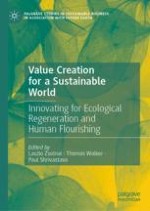The ecological, social and technological challenges of the Anthropocene require developing and implementing new economic, business, and financial models to create sustainable value for a wide range of stakeholders including nature, society, and future generations. This book defines ‘sustainable value creation’ as bringing forth products, services, organizational forms, processes, actions, and policies which satisfy real social needs and contribute to the ecological regeneration of nature.
The book collects and analyzes innovative economic, business, and social models of sustainable value creation globally. It critically examines the existing mainstream models of business and financial value creation. In reviewing both traditional and sustainability-oriented models, it focuses on both the challenges and opportunities inherent in a possible shift from models based on single-stakeholder wealth creation to models that propagate multidimensional value creation.
Part of the Palgrave Studies in Sustainable Business in Association with Future Earth series, this book aims to engage academics, and business and civil society practitioners to discuss innovative value creation models for a sustainable world. Interdisciplinary and intercultural exchange will be facilitated to inspire and cross-fertilize different knowledge and action fields as well as to promote intergenerational dialogue about the prospects of the human-earth system.
